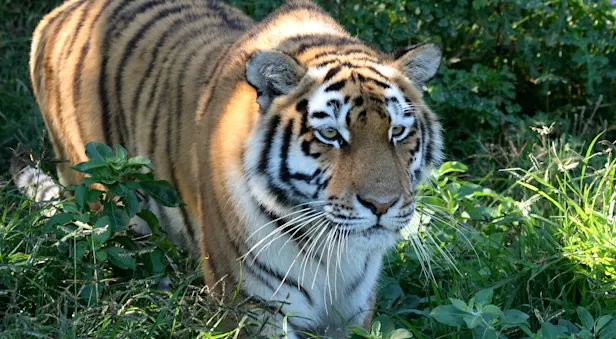Know Before You Go
Indian Wild Dog Facts | Bhutan & Nepal Wildlife Guide
Also called the dhole, the Indian wild dog, or Asiatic wild dog, bears many physical similarities to the African wild dog. It has large, rounded ears, hooded eyes with amber-colored irises, and a shorter muzzle than most canids. The dog also has a broad, domed skull with an enlarged forehead and upper jawbones that produce a slightly concaved face. The Indian wild dog typically weighs 26 to 44 pounds, and its black-tipped tail is between 16 and 18 inches long. These creatures are about 35 inches long and 20 inches tall from the shoulder, sporting rust-colored coats with white undersides and chests.
The Indian wild dog can survive in a wide array of environments. An adaptable animal, it is found in dense rainforests and moist and dry deciduous forests, which provide thick cover for hunting, as well alpine, evergreen and thorn scrub forests. During the day, Indian wild dogs roam open spaces and can be found in meadows, jungle clearings, steppes, grasslands and on the banks of rivers.
The Indian wild dog primarily hunts during the day, and it also hunts at night. On its own, it will hunt small prey, such as fawns and hares, but at times it may hunt in pairs and will kill medium-sized ungulates, such as deer. It drinks frequently after eating and will actively search for a water source once finished. Although the majority of food is hunted, it will sometimes scavenge from leopard and tiger kills.
Like the wolf, the Indian wild dog is a highly social and cooperative animal and often lives in extended family packs of 5 to 12 individuals, with more males than females (usually there is just one breeding female). There is a strict social hierarchy within the pack, so fighting and aggression rarely occur.
The Indian wild dog has some extraordinary vocalizations that warn members of the pack of danger. Its repetitive whistles are so distinct that they can identify individual members of the pack.
Habitat destruction is a significant threat to the estimated 2,500 Indian wild dogs remaining in the wild. They are found mainly in protected reserves and wildlife sanctuaries. Populations are expected to continue to decline due to habitat loss.
See Indian Wild Dogs on These Nature Safaris

Wild & Ancient Himalaya: Nepal & Bhutan
Explore mountain heights and jungle lowlands on this soulful journey through the cultural and wildlife treasures of two neighboring Himalayan nations—including rhino tracking in Chitwan National Park.

























